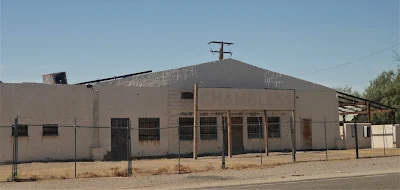.JPG) |
| Laureen Beyer pointing out where she is in Washington D.C. |
A piece of Route 66 history is located 697 miles southeast from where this iconic roadway began back in 1926 in downtown Chicago.
“But I thought the Mother Road went from Chicago to Santa Monica?” little Jimmy may ask.
Well, that is correct but when my lovely wife, Laureen, and I returned to Washington D.C. recently, we were thrilled to see a beautiful exhibit about Route 66 at the National Museum of American History.
.JPG) |
| Towns along Route 66 from Chicago to Santa Monica |
“Are you thrilled?” Laureen asked.
“Thrilled to be thrilled.”
It is not a large exhibit, but all the information a person visiting this Smithsonian Museum is there to garner a taste of how important Route 66 was for early travelers across the United States.
Stretching an impressive 2,448 miles through Illinois, Missouri, Kansas, Oklahoma, Texas, New Mexico, Arizona, and finally arriving in California.
It took six years to build this road, from 1926 until 1932, but it was not fully paved until 12 years later in 1938.
Cyrus Avery, a businessman in Tulsa, Oklahoma stated, “I challenge anyone to show a road of equal length that traverses more scenery, more agricultural wealth, and more mineral wealth than does U.S. 66.”
Avery founded the U.S. 66 Highway Association and first called Route 66 the ‘Main Street of America.’
I have traveled quite a bit along Route 66 getting research for this or that story and I never tire of driving the long stretches of usually empty roadway. Passing through towns that are still here like Newberry Springs, Ludlow, Seligman, Winslow, and towns that are simply ghosts of what they once were, Bagdad, Siberia, Two Guns, and many more that dot the long stretches of roadway.
Each time I stop, it’s hard not to imagine hearing the voices, the laughter, the tears, that once could be heard in these once vibrant spots.
 |
| What were the hopes of dreams of these folks along Route 66 |
It’s not a quick trip taking the byways, but that is the reason - to enjoy and understand the history of this wonderful highway that stretches for so many miles.
The Smithsonian’s were something that was top on our list as we landed at the Ronald Reagan Washington National Airport.
Actually, making sure our bags arrived on the same plane as we did, getting to our hotel and having an adult libation were my top priorities.
But during our trip to the city planned by George Washington, we hoofed it to some of the most famous museums in the world.
The Smithsonian’s.
I had only traveled to our nation’s capital once before and knew there was so much to see that numerous trips may not cover all it had to offer.
I learned there was a lot this large berg had to show a visitor - and one previous trip was not enough.
We like getting up early, having a sip of coffee and hitting places before the crowds show up - and in Washington D.C. the crowds were always present, especially during the 4th of July week.
And as usual, we headed out before most people had tumbled from their beds to a place which was on both of our radars.
The Route 66 experience at the National Museum of American History.
The exhibit is inundated with memorabilia commemorating this masterpiece of a highway.
 |
| Some travelers provisions on display |
.JPG) |
| Four outstanding women who braved early Route 66 |
There are some of the original vehicles on display which drove across Route 66. Along with those displays there are sculptures of men and women standing or sitting in those very same vehicles - it was rather surreal since the area the exhibit is located is rather dark and lights shine on each exhibit.
.JPG) |
| Often, Route 66 was not for the weak of heart |
“Rather ghostly,” Laureen said.
“Yes, it's as though the mannequins may turn and talk to us,” I replied.
“Wonder what they would say?”
I shrugged. “Hey, I get tired standing on my feet twenty-four-seven. But then again, perhaps all these inanimate objects come alive once the museum closes at night and have a monster gala.”
Laureen ignored me, she’s good at that.
An open aired two seat car from 1903 is on display showing two men and a dog trying to pull it out of a sandy patch using block and tackle.
Another shows a family sedan loaded down with everything they would need while crossing the nation along Route 66. Spare tires, spare water, sleeping bags, lanterns, tents, and the like.
.JPG) |
| Everything a family may need during the Route 66 journey |
Stories of folks who made the adventure are there for visitors to read. Stories about the Hamons, the Shorts, the Haggards, and four young women who ventured out on their own in 1947 from New York to Los Angeles, utilizing Route 66 once they reached Chicago.
In fact, in 1946, an up-and-coming musician, Bobby Troup, drove the route from Pennsylvania to Los Angeles. During the trip his wife suggested he write a song about it - the rest is history. Nat King Cole took the song and made it a gigantic hit, ‘Get Your Kicks on Route 66’.
There is a lot to see and experience at the Route 66 exhibit, but there is a lot more to see while taking the time and wandering at this and the other Smithsonian Museums in Washington D.C.
Actually, visiting our nation’s capital should be on any traveler's ultimate destination list.
Though I would suggest Fall or Spring, summer is brutal with the humidity hitting at least 1,000 percent.
For further information: https://www.si.edu/object/route-66-pavement-1932%3Anmah_1276320










































